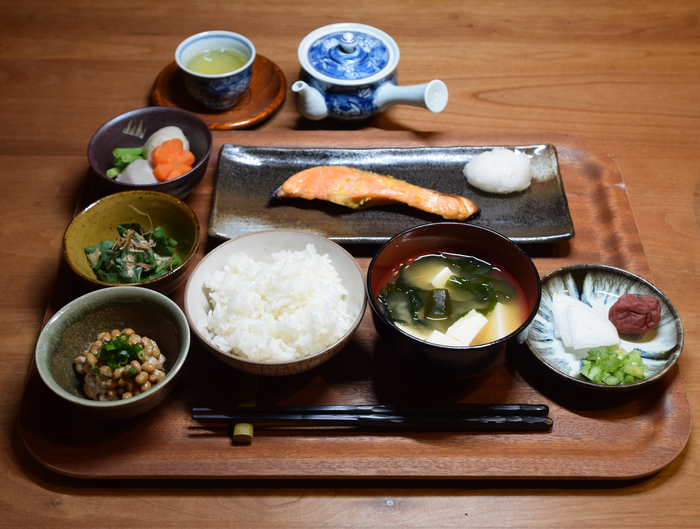Japanese food is popular worldwide and has been registered as a UNESCO Intangible Cultural Heritage. There is a scoring system named “the 12-component modified Japanese Diet Index (mJDI12),” which focuses on the intake of the Japanese diet pattern. It includes 12 foods and food groups: rice, miso soup, pickles, soy products, green and yellow vegetables, fruits, seafood, mushrooms, seaweed, green tea, coffee, and beef and pork. Scores range from 0 to 12, with higher scores indicating a diet that conforms to the Japanese food pattern.

Credit: Osaka Metropolitan University
Japanese food is popular worldwide and has been registered as a UNESCO Intangible Cultural Heritage. There is a scoring system named “the 12-component modified Japanese Diet Index (mJDI12),” which focuses on the intake of the Japanese diet pattern. It includes 12 foods and food groups: rice, miso soup, pickles, soy products, green and yellow vegetables, fruits, seafood, mushrooms, seaweed, green tea, coffee, and beef and pork. Scores range from 0 to 12, with higher scores indicating a diet that conforms to the Japanese food pattern.
A research group led by Dr. Hideki Fujii M.D. and Associate Professor Yoshinari Matsumoto at the Osaka Metropolitan University analyzed the relationship between meals rated by mJDI12, muscle mass, and liver fibrosis progression in 136 patients with nonalcoholic fatty liver disease (NAFLD) attending the Osaka Metropolitan University Hospital.
The research group found the following: the group with a higher mJDI12 showed a lower degree of liver fibrosis progression. Moreover, among the Japanese diet patterns, a high intake of soy products, seafood, and seaweed showed a suppressive effect on liver fibrosis progression. In addition, the group with a higher intake of soy products had higher muscle mass, and the group with higher muscle mass had a lower degree of liver fibrosis progression.
“This study indicates that the Japanese diet pattern may be effective as a dietary treatment for NAFLD patients. We hope that further intervention studies will lead to the establishment of an effective diet for those patients,” concluded Professor Matsumoto.
Their findings were published in Nutrients.
###
About OMU
Osaka Metropolitan University is a new public university established in April 2022, formed by merger between Osaka City University and Osaka Prefecture University. For more research news visit https://www.omu.ac.jp/en/ or follow @OsakaMetUniv_en and #OMUScience.
Journal
Nutrients
DOI
10.3390/nu15051175
Method of Research
Observational study
Subject of Research
People
Article Title
Severity of Liver Fibrosis Is Associated with the Japanese Diet Pattern and Skeletal Muscle Mass in Patients with Nonalcoholic Fatty Liver Disease
Article Publication Date
26-Feb-2023




